Check out these tips and do well in the
 Vila Nova de Paiva is a popular destination for lovers of traditional Portuguese cuisine, with a special focus on dishes that showcase game meat and fish from its rivers. The local cuisine combines local ingredients with ancient knowledge, resulting in unique flavours that reflect the region's cultural identity.
Vila Nova de Paiva is a popular destination for lovers of traditional Portuguese cuisine, with a special focus on dishes that showcase game meat and fish from its rivers. The local cuisine combines local ingredients with ancient knowledge, resulting in unique flavours that reflect the region's cultural identity.Among the most emblematic dishes is rabbit stewed with carqueja, an aromatic herb typical of the Beira mountains, which gives the meat a special aroma. Wild boar and stewed lamb also have a place of honour on local tables, highlighting the municipality's strong hunting tradition.
As for fish, trout with escabeche sauce, sourced from the cold, clear waters of the Paiva River, is a delicacy of choice. The goat stew, rich in flavours and tradition, completes the main course offering, revealing the pastoral influence of the parishes in the municipality.
The parish of Pendilhe is renowned for its artisanal production of smoked meats, such as salpicão, appreciated for its texture and intense flavour. This authentic and deep-rooted cuisine promises a true sensory journey through the soul of the Terras do Demo.
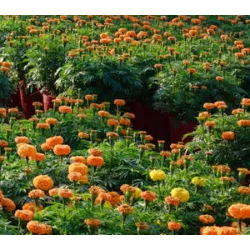 December 15th is Gardener's Day, honoring the professionals responsible for the health and beauty of gardens, plants and flowers. These workers are essential for the planting and maintenance of various species, performing tasks such as preparing the soil, planting seeds, watering, pruning and controlling pests. Gardening not only beautifies spaces, but also contributes to the conservation of the environment, attracting fauna and improving the quality of life. The work of a gardener requires knowledge, creativity and attention to detail, with activities that vary according to the seasons.
December 15th is Gardener's Day, honoring the professionals responsible for the health and beauty of gardens, plants and flowers. These workers are essential for the planting and maintenance of various species, performing tasks such as preparing the soil, planting seeds, watering, pruning and controlling pests. Gardening not only beautifies spaces, but also contributes to the conservation of the environment, attracting fauna and improving the quality of life. The work of a gardener requires knowledge, creativity and attention to detail, with activities that vary according to the seasons.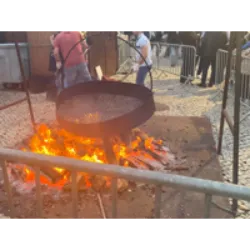 Magusto is a festival between October and November, associated with dates such as Saint Simon's Day, All Saints' Day and Saint Martin's Day. It is celebrated around bonfires, roasting chestnuts with jeropiga, açaí or new wine. The brave jump over the bonfire, and "filling" it with ashes is part of the tradition. Despite the rain in autumn, "Saint Martin's summer" brings sunshine. The legend of Saint Martin, related to a rainy day, explains this phenomenon. A specific tradition, the "Magusto da Velha", takes place in Aldeia de Viçosa on December 26, honoring a rich old woman with the throwing of chestnuts from the bell tower and prayers. The event in Barqueiros, Mesão Frio, connects magusto to ancient rituals in honor of the dead.
Magusto is a festival between October and November, associated with dates such as Saint Simon's Day, All Saints' Day and Saint Martin's Day. It is celebrated around bonfires, roasting chestnuts with jeropiga, açaí or new wine. The brave jump over the bonfire, and "filling" it with ashes is part of the tradition. Despite the rain in autumn, "Saint Martin's summer" brings sunshine. The legend of Saint Martin, related to a rainy day, explains this phenomenon. A specific tradition, the "Magusto da Velha", takes place in Aldeia de Viçosa on December 26, honoring a rich old woman with the throwing of chestnuts from the bell tower and prayers. The event in Barqueiros, Mesão Frio, connects magusto to ancient rituals in honor of the dead. The Straw Hat Pirates, the group of pirates led by Luffy, got their name from the straw hat Luffy always wears. Each group member has a personal goal on their journey. The world of One Piece is inhabited by a wide variety of characters, including humans, sea creatures, anthropomorphic animals, and even giants.
The Straw Hat Pirates, the group of pirates led by Luffy, got their name from the straw hat Luffy always wears. Each group member has a personal goal on their journey. The world of One Piece is inhabited by a wide variety of characters, including humans, sea creatures, anthropomorphic animals, and even giants. Transition metal complex compounds have been attracting attention in the field of chemistry due to their varied structures and intense colors. These materials are formed when a transition metal binds to different molecules or ions called ligands, creating geometric arrangements such as octahedral, tetrahedral, or square-planar shapes. Each type of geometry directly influences the chemical behavior of the complex.
Transition metal complex compounds have been attracting attention in the field of chemistry due to their varied structures and intense colors. These materials are formed when a transition metal binds to different molecules or ions called ligands, creating geometric arrangements such as octahedral, tetrahedral, or square-planar shapes. Each type of geometry directly influences the chemical behavior of the complex.One of the most fascinating aspects is the origin of their colors, which arises from electron transitions between different energy levels present in the metal's orbitals. When light strikes the complex, part of it is absorbed and part is reflected; the perceived color depends precisely on this energy difference between orbitals, which varies according to the metal and the ligands involved.
Besides their visual appeal, these compounds play an important role in various practical areas. They can act in catalytic processes, in materials used for sensors, and in systems that rely on specific optical properties. Understanding their structure and characteristics is essential for developing more efficient applications and expanding the use of these materials in everyday scientific and technological contexts.
 Christmas
Christmas Harry Potter
Harry Potter Academic
Academic Stranger Things
Stranger Things Sports
Sports The Walking Dead
The Walking Dead Beers
Beers Music
Music Games
Games Copa Libertadores
Copa Libertadores Cinema and TV
Cinema and TV Tourism
Tourism FIFA Women's Cup
FIFA Women's Cup KPOP
KPOP Swimming
Swimming Hip Hop
Hip Hop Card games
Card games Pop Music
Pop Music South America Tourism
South America Tourism Portuguese Language
Portuguese Language Board games
Board games MineCraft
MineCraft Tennis
Tennis BasketBall
BasketBall Physics-Chemistry
Physics-Chemistry TV Séries
TV Séries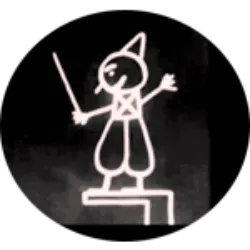 Animations
Animations Funk
Funk Surf
Surf FortNite
FortNite Movies
Movies Math
Math Astrology
Astrology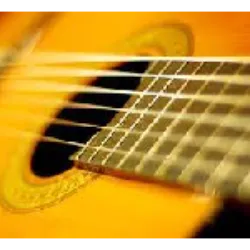 MPB
MPB Geography
Geography RPG
RPG Rock n Roll
Rock n Roll VolleyBall
VolleyBall Barbie
Barbie MarioBros
MarioBros Brazilian soap operas
Brazilian soap operas Europe Tourism
Europe Tourism Roblox
Roblox Athletics
Athletics Sertanejo
Sertanejo English Language
English Language Soccer
Soccer Forró
Forró Samba & Pagode
Samba & Pagode Natural Sciences
Natural Sciences Portugal
Portugal Gymnastics
Gymnastics Olympics
Olympics Portuguese Folklore
Portuguese Folklore Electronic games
Electronic games History
History North America Tourism
North America Tourism France Tourism
France Tourism Chile Tourism
Chile Tourism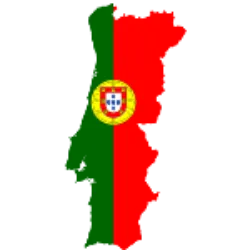 Portugal Tourism
Portugal Tourism Brasileirão
Brasileirão Canada Tourism
Canada Tourism United Kingdom Tourism
United Kingdom Tourism Curaçao Tourism
Curaçao Tourism Brazilian Socccer
Brazilian Socccer Colombia Tourism
Colombia Tourism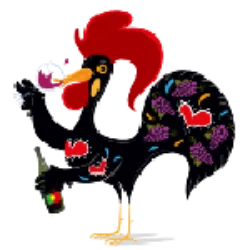 Portuguese Wines
Portuguese Wines French Guiana
French Guiana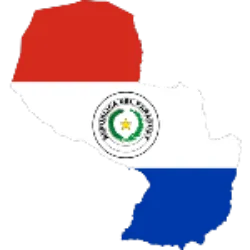 Paraguay Tourism
Paraguay Tourism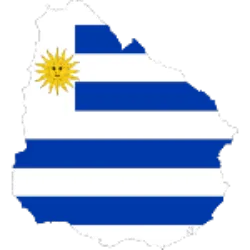 Uruguay
Uruguay Animated Cartoon
Animated Cartoon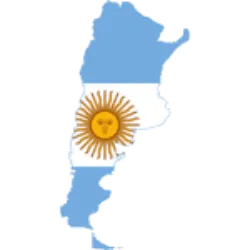 Argentina Tourism
Argentina Tourism Suriname Tourism
Suriname Tourism Anime
Anime Spanish Socccer
Spanish Socccer Yoga
Yoga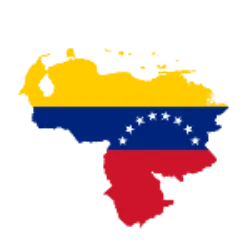 Venezuela Tourism
Venezuela Tourism Diversity
Diversity United States Tourism
United States Tourism Falkland Island Tourism
Falkland Island Tourism Guyana Tourism
Guyana Tourism Portuguese Socccer
Portuguese Socccer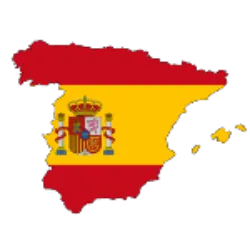 Spain Tourism
Spain Tourism Aruba Tourism
Aruba Tourism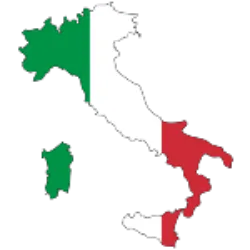 Italy Tourism
Italy Tourism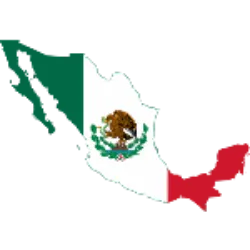 Mexico Tourism
Mexico Tourism Brazil Tourism
Brazil Tourism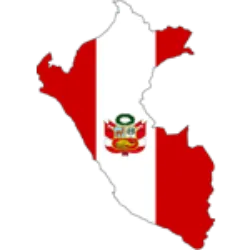 Peru Tourism
Peru Tourism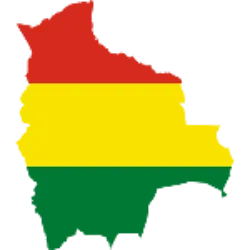 Bolivia Tourism
Bolivia Tourism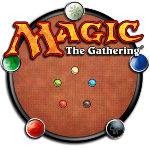 Magic the Gathering
Magic the Gathering Bonaire Tourism
Bonaire Tourism BlockBusters
BlockBusters NBA
NBA Prehistory
Prehistory Ancient Age
Ancient Age Marvel
Marvel Blonde Jokes
Blonde Jokes Saint John's Day
Saint John's DayYou know? Today is the day of..
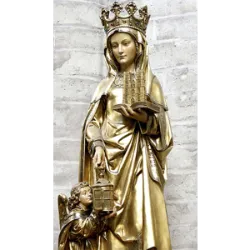 December 16th Saint Adelaide day. Saint Adelaide of Burgundy is known as the patron saint of widows and also of second unions, being venerated especially for her dedication to the Christian faith, generosity and important role as empress of the Holy Roman Empire. Saint Adelaide was born in 931 in Burgundy, daughter of King Rudolf II. After the death of her first husband, King Lothair II of Italy, Adelaide was imprisoned by Berengar of Ivrea, who tried to force her to marry his son. She fled and married Emperor Otto I, becoming empress and promoting Christianity and charity. After the death of Otto and his son, Otto II, he dedicated himself even more to the church and lived in a convent until his death in 999. His devotion and generosity earned him canonization by the Catholic Church.
December 16th Saint Adelaide day. Saint Adelaide of Burgundy is known as the patron saint of widows and also of second unions, being venerated especially for her dedication to the Christian faith, generosity and important role as empress of the Holy Roman Empire. Saint Adelaide was born in 931 in Burgundy, daughter of King Rudolf II. After the death of her first husband, King Lothair II of Italy, Adelaide was imprisoned by Berengar of Ivrea, who tried to force her to marry his son. She fled and married Emperor Otto I, becoming empress and promoting Christianity and charity. After the death of Otto and his son, Otto II, he dedicated himself even more to the church and lived in a convent until his death in 999. His devotion and generosity earned him canonization by the Catholic Church. December 16 is Amateur Theater Day in Brazil, and recognizes the contributions of people who dedicate themselves to non-profit theater. Emerging in the 16th century with the arrival of the Jesuits, amateur theater began to be used by Father José de Anchieta as a tool to catechize the Indians, integrating itself into religious and civic events. In the 1930s, commercial theater began to lose ground to cinema, which led to the growth of initiatives by amateur groups that sought a more artistic approach to theater. An important milestone in the history of amateur theater in Brazil was the founding of O Tablado in the 1950s by actress and director Maria Clara Machado, which became an important center for dramatic arts in the country.
December 16 is Amateur Theater Day in Brazil, and recognizes the contributions of people who dedicate themselves to non-profit theater. Emerging in the 16th century with the arrival of the Jesuits, amateur theater began to be used by Father José de Anchieta as a tool to catechize the Indians, integrating itself into religious and civic events. In the 1930s, commercial theater began to lose ground to cinema, which led to the growth of initiatives by amateur groups that sought a more artistic approach to theater. An important milestone in the history of amateur theater in Brazil was the founding of O Tablado in the 1950s by actress and director Maria Clara Machado, which became an important center for dramatic arts in the country.Check out other curiosities and quiz topics
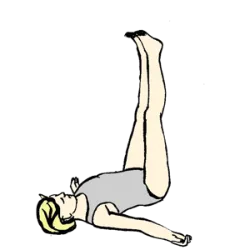
The Viparita Karani pose is performed by lying on the back with the legs extended vertically, using the wall for support. Although often associated with beginners, it is recognized for providing significant benefits to a wide range of practitioners.
The position reduces the effort of the deep trunk muscles and relieves the lower back, making it a safe option for older adults and those recovering from physical strain. In many classes, props such as cushions and blocks are used to adjust the hips and make holding the pose more comfortable.
The practice also slows the heart rate, improves venous return from the legs, and serves as a natural way to release tensions accumulated throughout the day. It is often used as a transition before more intense sequences or at the end of sessions focused on body awareness. The recommendation is to remain still for a few minutes, paying attention to the breath and allowing the body to relax gradually.

The clash between Flamengo and Palmeiras has become one of the most compelling matchups in recent Libertadores history. Flamengo brings its explosive attack, star-studded squad, and a fan base that treats every decisive match as destiny. Palmeiras counters with tactical discipline, competitive consistency, and the experience earned from deep tournament runs. The final in Lima adds another layer of intrigue. It was there that Flamengo lived one of its most iconic nights, and returning to this stage revives emotions and expectations. For Palmeiras, winning in such a symbolic setting offers the chance to write a new chapter for a club accustomed to big finals. More than just a game, Flamengo vs Palmeiras has come to represent a golden era of the Libertadores: two giants, two contrasting identities, and a trophy that constantly passes through them. Every meeting feels like a portrait of Brazilian football at its highest level.

Yoga has emerged not only as a physical practice but as a complete lifestyle, integrating mindful eating, proper sleep, and healthy habits. More than exercise, its techniques encourage mindfulness, self-care, and emotional balance, promoting overall well-being in modern life. The practice can be adapted for different groups, including children, seniors, pregnant women, and people with disabilities, making yoga accessible to all bodies and needs. Postures, breathing techniques, and meditation can be adjusted to each level, ensuring safety and effective benefits. Scientific studies confirm yoga’s positive effects: it helps reduce stress, improves posture, increases flexibility, and supports emotional balance. In addition, regular practice enhances body awareness, strength, and stability, becoming an effective tool for managing a fast-paced routine and the challenges of modern living. Thus, yoga stands as a path that unites body, mind, and healthy habits, showing that self-care goes far beyond the physical, reflecting in quality of life and holistic well-being.

The long-awaited 5th season of Stranger Things, which will mark the end of the series, already has a confirmed date and promises an epic conclusion. Netflix has announced that it will feature eight episodes, released in three parts. This final season takes place in the fall of 1987, with a time jump from the events of season 4. Hawkins is under military quarantine, Eleven must stay hidden, and the hunt for Vecna intensifies, even though he has disappeared. The creators, the Duffer brothers, have stated that they always knew how the ending would be — they’ve been planning one of the final scenes for six or seven years, aiming to deliver an emotional conclusion worthy of the series’ journey. Returning to the cast are names like Millie Bobby Brown (Eleven), Finn Wolfhard (Mike), and David Harbour (Hopper), along with new additions such as Linda Hamilton, promising to heighten the drama of this final chapter. According to the producers, all the mysteries of the “Upside Down” — from Vecna to the Demogorgons and other unresolved arcs — will be answered this season, culminating in a decisive final battle.

The municipality of Oeiras, known for its beaches, cliffs, and historical heritage, has recently become a prominent setting for Portuguese television. The series “O Grito”, directed by Leonel Vieira and starring Daniela Ruah and Sara Matos, was entirely filmed in Oeiras, transforming familiar locations into scenes of suspense and mystery.
Among the locations used are the Parque dos Poetas, with its sculptures and peaceful trails; the Passeio Marítimo de Algés, offering stunning views over the Tagus River; and the Praia da Torre, which combines the power of the waves with the serenity of small coves. Each site was carefully chosen to reflect the intense atmosphere of the narrative, presenting Oeiras in a way that is new for many residents and visitors.
Beyond entertainment, the series highlights the municipality's potential as a versatile filming location, capable of hosting high-quality productions. The presence of “O Grito” demonstrates that, alongside history, culture, and nature, Oeiras is also a stage for stories told through cinema and television.
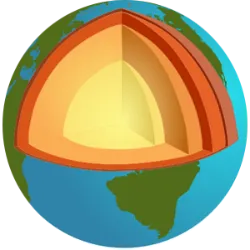
The Earth is composed of several layers that differ in composition, temperature, and physical properties. At the core, located at the center of the planet, there are two parts: the inner core, solid and primarily made of iron and nickel, and the outer core, liquid, responsible for generating Earth’s magnetic field. Above the core lies the mantle, a thick layer of hot and semi-solid rocks that move slowly, causing phenomena such as volcanoes and earthquakes. The outermost part is the crust, thin and rigid, where we live; it is divided into the continental crust, thicker and composed of granite, and the oceanic crust, thinner and made of basalt. Between the crust and the mantle is the asthenosphere, a partially melted region that allows tectonic plates to move. These layers constantly interact, shaping the planet’s surface, forming mountains, valleys, volcanoes, and oceans. Studying Earth’s structure is essential to understanding natural phenomena, exploring mineral resources, and assessing geological risks. In this way, the planet reveals a continuous internal dynamic that sustains life and transforms the landscape over time.

The poem “Jabberwocky” is Lewis Carroll’s most famous nonsense poem, included in Through the Looking-Glass, and What Alice Found There (1871). It mixes invented words with poetic sound, creating a fantastic atmosphere full of imagination.
Jabberwocky
It was brillig, and the slithy toves
did gyre and gimble in the wabe;
all mimsy were the borogoves,
and the mome raths outgrabe.
“Beware the Jabberwock, my son!
The jaws that bite, the claws that catch!
Beware the Jubjub bird, and shun
the frumious Bandersnatch!”
He took his vorpal sword in hand;
long time the manxome foe he sought—
so rested he by the Tumtum tree
and stood awhile in thought.
And as in uffish thought he stood,
the Jabberwock, with eyes of flame,
came whiffling through the tulgey wood,
and burbled as it came!
One, two! One, two! And through and through
the vorpal blade went snicker-snack!
He left it dead, and with its head
he went galumphing back.
“And hast thou slain the Jabberwock?
Come to my arms, my beamish boy!
O frabjous day! Callooh! Callay!”
He chortled in his joy.
It was brillig, and the slithy toves
did gyre and gimble in the wabe;
all mimsy were the borogoves,
and the mome raths outgrabe.

The horror classic Poltergeist (1982), directed by Tobe Hooper and produced by Steven Spielberg, became famous not only for its chilling story but also for the so-called “Poltergeist curse.” Over the years, several cast and crew members died young and, in many cases, under mysterious circumstances, fueling legends surrounding the production.
Heather O’Rourke, who played little Carol Anne, died at just 12 years old due to unexpected medical complications, while Dominique Dunne, who portrayed Dana, was murdered by her ex-boyfriend shortly after filming. Other actors and individuals connected to the movie also suffered untimely deaths, many attributed to sudden illnesses or tragic accidents, deepening the aura of mystery around the film.
Experts and horror fans alike point out that these tragedies, combined with the paranormal events depicted on screen, contributed to Poltergeist becoming an urban legend in the world of cinema. The blend of terror in the story and real-life misfortunes turned the film into a true icon of the genre, evoking both fascination and fear decades after its release.
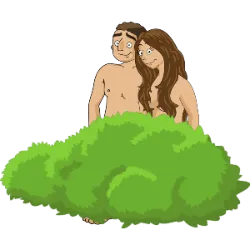
It all started with Adam and Eve, the first man and woman created by God. They lived in the Garden of Eden, a beautiful and perfect place. But one day, they disobeyed God and ate the forbidden fruit. This teaches us how important it is to obey God and do what is right.
Next, we have the amazing story of Moses! He was chosen by God to free the people of Israel from slavery in Egypt. With God’s help, Moses opened the Red Sea, and the people walked through on dry ground! Wow! Can you imagine seeing the sea split open? This story shows how God takes care of those who trust in Him.
And we can’t forget David and Goliath. David was a young shepherd boy who faced the giant Goliath with just a stone and a sling. He wasn’t afraid because he knew God was with him. And he won! This story shows that even if we are small, we can overcome big challenges when we trust in God.

The June festivals in Sweden, known as Midsommarafton, are considered the most important national celebrations in the country, surpassing even Christmas in popular participation. Held between June 20 and 26, Friday is the traditional day for the celebration, marked by several typical traditions.
One of the central symbols of the festival is the majstången — a maypole decorated with flowers and leaves, erected in the center of the villages, around which participants dance in a circle. This tradition has common roots with the Maypole of the Germanic peoples and is linked to fertility and the renewal of nature.
During Midsommarafton, people dress in rural clothes, sing traditional carols and celebrate with typical seasonal foods, such as strawberries and potatoes. Charms are also part of the festival, especially among young women, who make bouquets with seven or nine flowers to dream about their future husbands.
In addition, popular belief says that the herbs harvested at this time have special powers and that the water from the springs brings health. Houses are decorated with flowers and leaves to attract luck. Big cities like Stockholm and Gothenburg are almost empty, as Swedes take refuge in their summer homes to celebrate the date. The traditional balloons of the festival, however, often cause accidents.

The big news for the 2025 edition of the Club World Cup will be the presence of Inter Miami CF, a club from the United States, which has secured a spot as the host country's representative. The North American team, which gained notoriety with the arrival of star Lionel Messi in 2023, secured its qualification by winning the 2024 MLS Supporters' Shield, an award given to the team with the best record in the regular season of Major League Soccer (MLS).
This spot, a first for the club and exclusive to the team from the host country, marks an important participation for soccer in the United States, which is on the rise with the increase in interest in big international stars and the growth of domestic competitions. In addition, the presence of Inter Miami CF in the tournament puts North American soccer in the spotlight, attracting even more audiences and sponsors to the sport in the country.
Inter Miami's qualification also represents the importance of a competitive championship like MLS, which is beginning to consolidate itself as a relevant league on the global stage. The club will now have the chance to face some of the best teams in the world at the 2025 Club World Cup, with the hope of making its mark on the tournament's history.
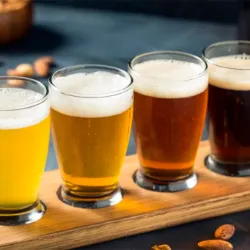
To choose the perfect beer, try different styles and brands, take food pairings into account and consider flavors, acidity and alcohol content. For example, for pasta, choose Dark Lager, Strong Ale or Pilsner, while for barbecue, opt for Pilsner, Stout or Brown Ale. Seafood pairs well with English Pale Ale, Amber Ale, Hefeweizen and Witbier, and for desserts, choose Stout, Porter or Fruit Lambic. Cheeses can be paired with a variety of beers, but dark beers like porter and stout generally work well. If it is vegetarian food, Pilsner is a good choice due to the variety of vegetarian ingredients.
On the Syndicato blog, you can find more tips on ideal combinations.

Opened in 1978, the Volta Redonda Municipal Zoo has established itself as one of the largest and most important spaces for environmental preservation and leisure in the state of Rio de Janeiro. Located in the Vila Santa Cecília neighborhood, the site was created with the aim of providing contact with nature in the middle of an industrial city, offering environmental education to the population and protecting wildlife.
With more than 300 animals of different species — including birds, mammals and reptiles — the zoo has become a regional reference in veterinary care and conservation programs. Highlights include the immersion aviary and the themed spaces aimed at educating children about the importance of biodiversity and the environment.
In addition to its educational function, the zoo is one of the most visited tourist attractions in the city, receiving thousands of visitors each year. The space has trails, picnic areas and playgrounds, integrating leisure and environmental awareness.
Over the years, the Volta Redonda Zoo has undergone renovations and structural improvements, reaffirming its role not only as a tourist destination, but also as a symbol of the relationship between urban development and environmental sustainability.

Realism / Naturalism / Parnassianism (19th century)
Machado de Assis (Dom Casmurro) – Brazil
Eça de Queirós (Cousin Basil) – Portugal
Gustave Flaubert (Madame Bovary) – France
Lima Barreto (The Sad End of Policarpo Quaresma) – Brazil
Olavo Bilac – Parnassian poetry – Brazil
Émile Zola – French naturalism
Modernism (20th century – until 1945)
James Joyce (Ulysses) – Ireland
Virginia Woolf (Mrs. Dalloway) – England
Franz Kafka (The Metamorphosis) – Czechoslovakia
Mário de Andrade (Macunaíma) – Brazil
Oswald de Andrade (Anthropophagic Manifesto) – Brazil
Carlos Drummond de Andrade – Modern poetry – Brazil
Contemporary (post-1945 to present)
Clarice Lispector (The Hour of the Star) – Brazil
Gabriel García Márquez (One Hundred Years of Solitude) – Colombia
José Saramago (Blindness) – Portugal
Chimamanda Ngozi Adichie – Nigeria, post-colonial literature
Haruki Murakami – Japan, modern surrealism
Conceição Evaristo – Brazil, Afro-Brazilian literature
Margaret Atwood (The Handmaid's Tale) – Canada

Inversion is when the normal order of words in a sentence is changed, usually for emphasis, style, or to create a specific grammatical structure.
- Normally, the order in English is:
Subject + Verb + Complement
Example: She had never seen such a thing.
With inversion, we change this:
- Negative adverbials
These expressions force an inversion when placed at the beginning of the sentence:
Examples:
- Never had she seen such a beautiful sunset.
- Rarely do we get such an opportunity.
- Not only did he win, but he also broke the record.
- Expressions of place.
Inversion sometimes happens with verbs of movement:
- On the hill stood a lonely cabin.
- Into the room walked the professor.
- Conditional structures (conditions)
Instead of using if , you can use formal inversion:
- Had I known, I would have helped.

Since ancient times, the Hebrew prophets have foretold the coming of a Messiah—a messenger from God who would bring salvation to His people. One of the most striking of these prophecies is found in Isaiah 53, which describes a “suffering servant” who would be rejected, punished for the transgressions of others, and through his suffering, bring healing and peace. Despite his apparent defeat, this servant would be exalted by God.
Centuries later, Christians see the life, death, and resurrection of Jesus Christ as the exact fulfillment of these words. Unjustly crucified, Jesus took on suffering for the sake of humanity and, when he rose again on the third day, was glorified, confirming his identity as the promised Messiah. For believers, his resurrection is proof that God’s ancient promises have been fully fulfilled.
For Christians, Jesus not only fulfilled Isaiah 53, but also several other messianic prophecies scattered throughout the Old Testament, such as in Psalms and Daniel. Easter, therefore, celebrates not only a historical event, but the fulfillment of a prophetic hope: the Messiah came, suffered, died and conquered death to offer eternal salvation to all who believe.

1. Basic Structure:
Question Word + Auxiliary Verb + Subject + Main Verb + Complement?
2. Questions with
-
-
3. Questions with
-
-
4. Questions with
-
-
5. Questions with
-
-
Attention! If
-
6. Questions with
-
7. Questions with
-

THE pulque is a traditional fermented beverage made from the juice extracted from the agave plant, which has been consumed by the indigenous peoples of Mexico for centuries. With its unique, slightly sour flavor, pulque has a rich history linked to the ancient Aztec and Toltec civilizations, who used agave to produce alcoholic beverages in religious ceremonies and celebrations.
Pulque production begins with the extraction of "miel de agave" (agave honey), which is naturally fermented to produce the beverage. Over time, pulque came to be consumed in a variety of ways, and during the colonial era it became a common drink among the working classes of Mexico, although it has lost popularity over the years in favor of more modern drinks such as tequila and mezcal.
Pulque was considered a sacred drink by the Aztecs and could only be consumed by priests, warriors or nobles. Its popularity has remained, especially in rural areas, and today it is consumed mainly in central and southern Mexico, often served in pulquerias, places that specialize in the drink.
Although it is not as common as it once was, pulque remains one of the most representative drinks of Mexican culture, connecting Mexicans with their historical and traditional roots.

THE Canadian whiskey It is widely recognized for its smoothness and elegance, winning admirers around the world. Its history dates back to the country's first settlers, who brought whisky distillation techniques from Europe. However, it was in Canada that whisky gained its own identity, characterized by its lightness and versatility, which makes it a perfect drink to be enjoyed neat, on the rocks or in cocktails.
Whisky production in Canada spread across the provinces, but it was in Ontario and Quebec that the first distilleries began producing this spirit commercially, in the 19th century. Over time, Canada has established itself as one of the largest whisky producers in the world.
Brands such as Crown Royal, which was created in 1939 to celebrate the visit of King George VI and Queen Elizabeth to Canada, are examples of how Canadian whisky has deep roots in the country's history. This particular whisky is known for its smooth blend, composed primarily of corn, which gives it a smoother, sweeter flavor than other types of whisky.
Today, Canadian whisky is a prestigious drink, widely enjoyed both in cocktails and in its pure form, and remains one of the country's most representative and respected alcoholic beverages.
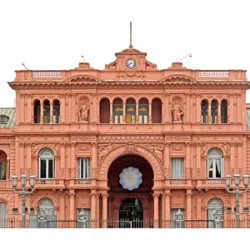
The Casa Rosada, the seat of the Argentine government, is one of the most emblematic buildings in Buenos Aires. Its history dates back to the 16th century, when the site housed a Spanish fort to protect the city. Over time, the building was renovated and, in the 19th century, under the government of Domingo Faustino Sarmiento, it acquired its iconic pink color, which symbolized the union between the Unitarians (white) and Federalists (red), rival political factions at the time.
Located in Plaza de Mayo, the Casa Rosada has been the scene of historic events, such as speeches by Juan and Eva Perón, as well as notable political demonstrations. Today, in addition to being the center of executive power, the site houses the Casa Rosada Museum, where you can see presidential objects, antique furniture and exhibits on Argentine history.
Visitors can take free guided tours of the historic rooms, the famous presidential balcony and explore the palace's rich architecture. An essential tour for anyone wanting to understand Argentine politics and culture.

Opened in 1819, the Prado Museum (Museo del Prado) is one of the largest and most prestigious art museums in the world. Located in the heart of Madrid, Spain, it was founded by King Ferdinand VII to display the royal collections. The neoclassical building that houses it was designed by Juan de Villanueva and later expanded by other architects, such as Rafael Moneo.
With more than 8,000 works of art, the museum is famous for its vast collection of European painting, notably works by masters such as Diego Velázquez, Francisco Goya, El Greco, Peter Paul Rubens and Hieronymus Bosch. In addition to paintings, the Prado also houses sculptures, drawings and decorative arts.
Considered the main museum in Madrid and one of the most important in Europe, the Prado attracts millions of visitors annually. Its impressive collection and contribution to the preservation of classical art make the Prado Museum a must-see for any art lover visiting the city.

Catalan is the official language of Barcelona, and learning a few expressions can enrich any tourist's experience. Here are some useful phrases:
Bon dia – Good morning
Bona tarda – Good afternoon
Bona nit – Good evening
Com estàs? – How are you?
Molt bé, gràcies – Very well, thank you
On és el lavabo? – Where is the bathroom?
Què tal? – How are you?
Quant costa? – How much does it cost?
Tinc gana/sede – I'm hungry/thirsty
Un cafè si us plau– A coffee, please
Perdona, on està...? – Excuse me, where is...?
Si us plau – Please
Gràcies – Thank you
Adéu – Goodbye
Em pots ajudar? – Can you help me?
M'agrada – I like it
Although many in Barcelona speak Spanish, using Catalan is a sign of respect for the local culture, and the Barcelonans will certainly appreciate the effort.
